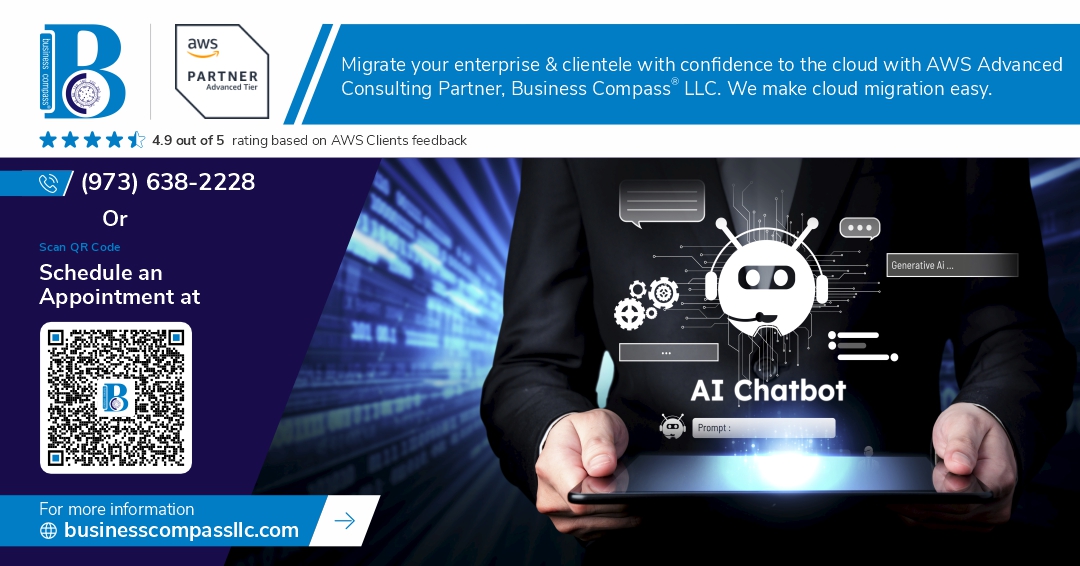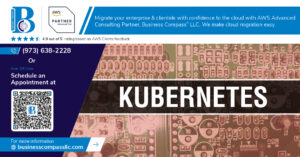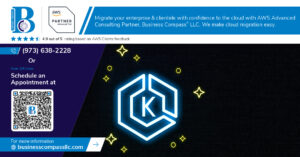Building smart chatbots that can handle complex, multi-step conversations requires more than just simple question-and-answer logic. LangGraph offers a powerful framework for creating agentic workflows that can manage sophisticated dialogue flows, remember conversation context, and guide users through intricate processes.
This guide is designed for developers and AI engineers who want to move beyond basic chatbot interactions and create truly intelligent conversational experiences. Whether you’re building customer service bots, virtual assistants, or complex domain-specific chatbots, you’ll learn how to architect multi-step chatbot workflows that feel natural and purposeful.
We’ll dive deep into LangGraph fundamentals and show you how to set up your development environment for success. You’ll master state management chatbots techniques that keep track of conversation context across multiple interactions. We’ll also explore advanced chatbot patterns that handle branching conversations, error recovery, and dynamic workflow adaptation.
By the end of this LangGraph tutorial, you’ll have the skills to design, build, test, and deploy production-ready conversational AI workflows that can handle real-world complexity while maintaining excellent user experience.
Understanding LangGraph Fundamentals for Chatbot Development
Core components and architecture of LangGraph framework
LangGraph operates as a state-based graph framework built on top of LangChain, enabling developers to create sophisticated multi-step chatbot workflows through node-based architecture. The framework consists of three primary components: nodes that handle specific conversation tasks, edges that define transitions between states, and a centralized state management system that maintains conversation context across interactions. Each node functions as an independent processing unit where you can implement custom logic, API calls, or AI model interactions, while edges control the flow based on conditions, user inputs, or computational results.
The graph structure allows for complex branching scenarios where conversations can take multiple paths depending on user responses or system decisions. State persistence ensures that information gathered in earlier conversation steps remains accessible throughout the entire workflow, enabling chatbots to maintain context and provide personalized responses. This architecture supports both linear and non-linear conversation patterns, making it possible to handle interruptions, context switches, and multi-turn dialogues that traditional rule-based systems struggle with.
Key advantages over traditional chatbot development approaches
Traditional chatbot development relies heavily on rigid decision trees or simple intent classification systems that break down when handling complex, multi-step conversations. LangGraph transforms this paradigm by introducing dynamic workflow management that adapts to conversation context in real-time. Unlike static chatbot frameworks, LangGraph enables developers to create agentic workflows where the chatbot can reason about its next actions based on current state and user interactions.
The framework eliminates the need for extensive hardcoding of conversation paths by allowing developers to define flexible state transitions and conditional logic. This approach significantly reduces development time while increasing the chatbot’s ability to handle unexpected user inputs or conversation detours. Memory management becomes seamless as LangGraph automatically maintains conversation state across multiple turns, preventing the common issue of chatbots “forgetting” previous interactions.
Performance optimization is built into the framework through its graph-based execution model, which only activates necessary nodes and avoids redundant processing. This selective execution pattern makes LangGraph chatbots more efficient than traditional systems that often process unnecessary logic paths during every interaction.
Integration capabilities with existing AI language models
LangGraph seamlessly integrates with popular language models including OpenAI’s GPT series, Anthropic’s Claude, Google’s Gemini, and open-source alternatives like Llama through standardized API interfaces. The framework abstracts model-specific implementation details, allowing developers to switch between different AI providers without restructuring their workflow logic. This flexibility enables teams to optimize for cost, performance, or specific model capabilities based on their use case requirements.
Model chaining becomes straightforward with LangGraph’s node architecture, where different nodes can utilize different language models for specialized tasks. For example, one node might use a fast, cost-effective model for intent classification while another employs a more sophisticated model for response generation. The framework handles token management, rate limiting, and error handling across multiple model providers automatically.
Custom model integration is supported through LangGraph’s extensible interface system, allowing developers to incorporate proprietary models, fine-tuned variants, or specialized AI services. The framework maintains consistent state management regardless of which models are being used, ensuring that conversation context flows smoothly between different AI components in your multi-step workflow.
Setting Up Your Development Environment for Multi-Step Workflows
Installing and configuring LangGraph dependencies
Start by setting up a Python virtual environment to isolate your LangGraph chatbot development. Install the core dependencies using pip install langgraph langchain-openai langchain-community. You’ll also need supporting packages like python-dotenv for environment variables and pydantic for data validation. Create a requirements.txt file to track all dependencies and ensure consistent installations across different development environments.
Creating your first workflow project structure
Organize your multi-step chatbot project with a clear directory structure. Create separate folders for workflows, states, tools, and configuration files. Your main project should include directories like workflows/ for LangGraph definitions, models/ for state schemas, tools/ for custom functions, and config/ for API keys and settings. This modular approach makes your agentic workflows easier to maintain and scale as complexity grows.
Establishing connections to language model APIs
Configure your language model connections by setting up API credentials in environment variables. Create a .env file containing your OpenAI, Anthropic, or other provider keys. Initialize your LLM instances in a separate configuration module, allowing easy switching between different models during development. Test connectivity with simple API calls before integrating into your LangGraph workflows to catch authentication issues early.
Testing basic workflow functionality
Build a minimal LangGraph workflow to validate your setup. Create a simple state graph with basic nodes that demonstrate message passing and state transitions. Write unit tests for individual workflow components and integration tests for complete conversation flows. Use LangGraph’s built-in visualization tools to inspect your workflow structure and debug any configuration issues before moving to complex multi-step chatbot scenarios.
Designing State Management Systems for Complex Conversations
Implementing Persistent Conversation Memory Across Interactions
Building effective LangGraph multi-step chatbot workflows requires robust memory systems that maintain conversation context across user sessions. LangGraph’s state management capabilities allow developers to create persistent storage mechanisms using Redis, PostgreSQL, or MongoDB backends. The key lies in designing conversation state schemas that capture user preferences, interaction history, and contextual metadata. When implementing memory persistence, structure your state objects to include user identifiers, conversation threads, and temporal markers. This approach enables chatbots to resume conversations naturally, referencing previous interactions and maintaining personalized context that enhances user experience significantly.
Managing User Context and Session Data Effectively
Effective state management chatbots leverage LangGraph’s built-in context handling to track user sessions across multiple workflow steps. Create context managers that store user preferences, current conversation state, and interaction patterns within structured data objects. Session data should include user authentication tokens, conversation flow positions, and accumulated context from previous exchanges. LangGraph’s state persistence allows developers to implement session timeouts, context cleanup routines, and selective memory retention strategies. Design your context management to balance memory efficiency with conversation continuity, ensuring users experience seamless interactions even after session interruptions or extended breaks between conversations.
Handling State Transitions Between Workflow Steps
Multi-step conversation design demands careful orchestration of state transitions within LangGraph workflows. Each workflow step should define clear entry conditions, exit criteria, and transition logic that determines the next conversation phase. Implement state transition handlers that validate current context, check user permissions, and route conversations appropriately. LangGraph’s conditional routing capabilities enable developers to create dynamic conversation flows that adapt based on user responses, system conditions, or external API results. Design transition logic that includes rollback mechanisms, allowing conversations to return to previous states when errors occur or users request changes to their interaction path.
Error Handling and Recovery Mechanisms
Robust agentic workflows incorporate comprehensive error handling strategies that maintain conversation continuity despite system failures or unexpected user inputs. LangGraph provides exception handling mechanisms that catch workflow errors, log incidents, and implement recovery procedures automatically. Design fallback conversation paths that gracefully handle API timeouts, invalid user inputs, and system resource limitations. Implement retry logic for external service calls, timeout handling for long-running operations, and graceful degradation when optional services become unavailable. Create user-friendly error messages that guide conversations back to functional workflow states while maintaining context and user engagement throughout recovery processes.
Building Interactive Multi-Step Conversation Flows
Creating branching dialogue paths based on user inputs
Building effective branching dialogue paths in LangGraph requires mapping user intents to specific conversation routes. Define clear decision nodes that evaluate user responses and route conversations accordingly. Use conditional edges to create dynamic pathways that adapt based on sentiment, keywords, or user preferences. Implement fallback routes for unexpected inputs to maintain conversation flow and prevent dead ends in your multi-step chatbot workflows.
Implementing conditional logic for dynamic responses
LangGraph’s state management enables sophisticated conditional logic through node functions that evaluate conversation context. Create decision trees using Python conditionals that assess user data, conversation history, and external variables. Implement response variants based on user behavior patterns, time of day, or previous interactions. Use state predicates to trigger different conversation branches, allowing your agentic workflows to deliver personalized experiences that feel natural and contextually appropriate.
Designing loops and recursive conversation patterns
Recursive patterns in LangGraph handle repetitive tasks like form filling, troubleshooting, or iterative refinement processes. Design self-referencing nodes that return to previous conversation states when conditions aren’t met. Implement counter mechanisms to prevent infinite loops while allowing legitimate repetition. Create exit conditions that gracefully transition users out of recursive patterns once objectives are achieved, ensuring your conversational AI workflows maintain progress toward user goals.
Optimizing response timing and user experience
Response timing significantly impacts user engagement in multi-step conversation design. Implement artificial delays for complex responses to simulate human-like thinking time. Use streaming responses for lengthy outputs to maintain user attention. Cache frequently accessed data to reduce latency in your LangGraph chatbot tutorial implementations. Design progressive disclosure patterns that reveal information incrementally, preventing cognitive overload while maintaining conversation momentum and user satisfaction throughout complex workflows.
Advanced Workflow Patterns for Enhanced Chatbot Functionality
Integrating external APIs and data sources seamlessly
LangGraph excels at connecting your chatbot to external systems through dedicated API nodes that handle authentication, rate limiting, and error recovery automatically. You can build nodes that fetch real-time data from CRM systems, weather services, or payment gateways while maintaining conversation flow. The key is designing fallback mechanisms when APIs fail – your workflow should gracefully handle timeouts and provide alternative responses. Consider implementing caching strategies for frequently requested data to improve response times and reduce API costs.
Implementing parallel processing for complex tasks
Multi-step agentic workflows often require executing multiple operations simultaneously to deliver fast responses. LangGraph supports parallel node execution where your chatbot can simultaneously query different data sources, process user inputs through various validation steps, or generate multiple response options for ranking. This pattern works exceptionally well for tasks like fact-checking claims against multiple databases or gathering comprehensive user profiles from various services. Design your parallel branches with proper synchronization points to ensure all data is collected before proceeding to response generation.
Creating approval workflows and human-in-the-loop systems
Critical chatbot decisions often require human oversight, especially in financial services, healthcare, or customer support escalations. LangGraph enables sophisticated approval workflows where the bot can pause execution, send requests to human agents via Slack or email integrations, and resume processing once approval is granted. You can implement different approval tiers based on request value or complexity, with automatic escalation rules. The state management system preserves full conversation context during human review periods, ensuring seamless handoffs between automated and manual processing steps.
Testing and Optimizing Your Agentic Workflow Performance
Unit testing individual workflow components
Testing LangGraph workflow components requires isolating each node and edge to verify correct behavior. Mock your LLM calls and external APIs to create predictable test scenarios. Focus on state transitions, error handling, and conditional routing logic. Write tests for edge cases where conversations might break or loop infinitely. Use pytest fixtures to create consistent test states across different workflow stages.
End-to-end conversation flow validation
Simulate complete user journeys through your multi-step chatbot workflows to catch integration issues. Create test scenarios covering happy paths, error recovery, and edge cases. Record conversation histories and validate that state management preserves context correctly across multiple turns. Test conversation branching, fallback mechanisms, and how your LangGraph handles unexpected user inputs that deviate from designed paths.
Performance monitoring and bottleneck identification
Profile your agentic workflows to identify slow components and memory-intensive operations. Monitor LLM response times, database queries, and external API calls within each workflow node. Track conversation completion rates and identify where users commonly drop off. Use logging to capture detailed timing metrics for each step in your multi-step conversation design. Set up alerts for performance degradation in production environments.
User feedback integration and continuous improvement
Implement feedback collection mechanisms directly within your conversational AI workflows. Track user satisfaction scores, conversation ratings, and explicit feedback after workflow completion. Analyze conversation logs to identify common failure patterns and user frustration points. Use A/B testing to compare different workflow variations and optimize based on real user interactions. Create automated reports showing workflow performance trends and improvement opportunities.
Deployment Strategies and Production Best Practices
Scaling workflows for high-volume chatbot interactions
Production LangGraph chatbot workflows demand horizontal scaling strategies to handle concurrent conversations efficiently. Implement container orchestration with Kubernetes to auto-scale workflow instances based on message queue depth and response latency metrics. Use Redis or Apache Kafka for distributed state management, ensuring conversation context persists across multiple worker nodes. Load balancers should route requests based on user sessions to maintain conversational continuity. Database connection pooling prevents bottlenecks during peak traffic, while caching frequently accessed workflow states reduces database load. Monitor CPU and memory usage patterns to optimize resource allocation and prevent workflow timeouts during high-volume interactions.
Monitoring and logging workflow execution in production
Comprehensive observability ensures your multi-step agentic workflows perform reliably in production environments. Structure logs with correlation IDs to trace complete conversation flows across distributed systems, capturing state transitions, decision points, and execution times for each workflow step. Implement custom metrics tracking conversation completion rates, average step execution times, and error frequencies by workflow type. Use OpenTelemetry for distributed tracing to identify performance bottlenecks in complex multi-step conversations. Set up alerting for workflow failures, timeout thresholds, and unusual conversation patterns. Real-time dashboards should display key performance indicators including active conversations, queue depths, and response time percentiles to enable proactive system management.
Security considerations for multi-step agent systems
Multi-step chatbot workflows create expanded attack surfaces requiring layered security approaches. Implement input validation at each workflow step to prevent injection attacks and malicious prompt manipulation. Use encrypted state storage with role-based access controls to protect sensitive conversation data between workflow transitions. API endpoints should authenticate requests with JWT tokens and rate limiting to prevent abuse. Sanitize user inputs before passing between workflow nodes, and implement output filtering to prevent information leakage. Regular security audits should examine workflow logic for potential vulnerabilities, while secrets management systems protect API keys and database credentials. Consider implementing conversation audit trails for compliance and forensic analysis capabilities.
Building sophisticated chatbots with LangGraph opens up exciting possibilities for creating truly interactive and intelligent conversational experiences. From setting up your development environment to mastering state management and designing complex multi-step flows, you now have the essential tools to create chatbots that can handle nuanced conversations and maintain context across multiple interactions. The advanced workflow patterns and optimization techniques covered here will help you build chatbots that feel natural and responsive to your users’ needs.
Ready to take your chatbot development to the next level? Start by implementing a simple multi-step workflow using the fundamentals we’ve discussed, then gradually add complexity as you become more comfortable with LangGraph’s capabilities. Remember that thorough testing and careful attention to deployment best practices will make the difference between a good chatbot and a great one. Your users will appreciate the thoughtful, context-aware conversations that well-designed agentic workflows can deliver.




















